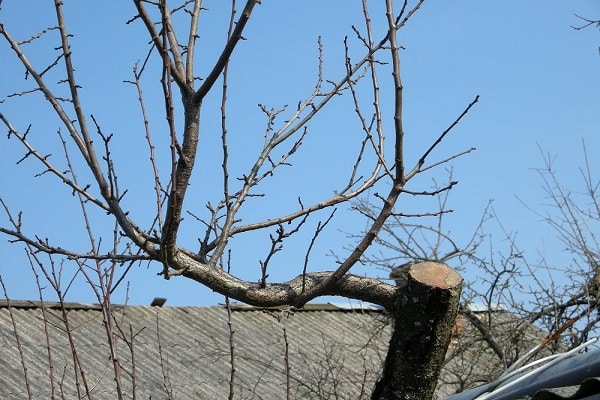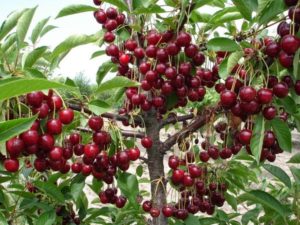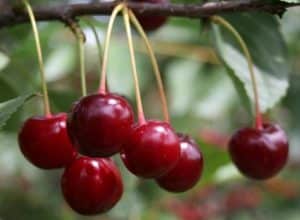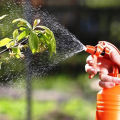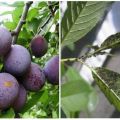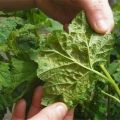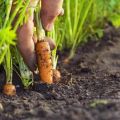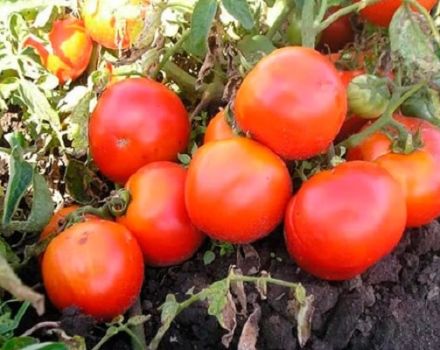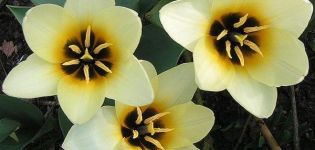How to get rid of aphids on cherries and how to process them, a review of drugs and folk remedies
The cherry aphid is a common garden pest that feeds on the sap of young leaves and shoots, which leads to loss of foliage on trees, with the subsequent death of the crop. What are the ways to get rid of aphids on cherry trees? There are chemical and biological drugs, folk remedies. Their competent application will save the harvest, save and protect trees from harmful insects.
Causes of aphids
Cherry aphids exist in the form of: larvae, wingless, winged, heterosexual individuals. Over the summer, aphids give several generations. There is an overpopulation of aphids living space, and in the fall many winged females are born, which fly long distances in order to capture new places to create colonies.
If during the summer you do not remove a colony of aphids that have captured trees in the garden, they will lay on young shoots near the buds of wintering larvae, and in the spring they will begin to multiply with renewed vigor, capturing new trees, bushes and herbaceous plants (cucumbers, tomatoes, peppers).
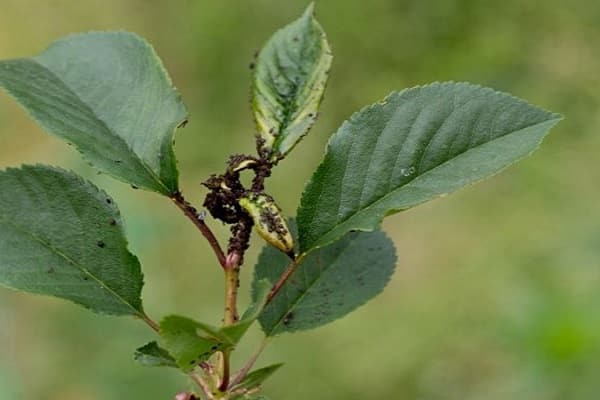
Signs of aphid tree damage
Thousands of species of aphids are known. Black cherry aphid, in addition to cherry, affects stone trees: plum, apricot, peach. The first sign of the capture of cherries by aphids is the appearance on young shoots, buds, blossoming leaves of shine - this is a sweet honeydew that aphids secrete as a result of vital activity. Aphids do not eat leaves, they only suck out the juice. Leaves, losing moisture, curl up, dry up, aphids move to other leaves.
The appearance of ants on trees is another sign of aphids; ants eat sweet honeydew, they guard aphids and carry them to other trees. Anthills can be found along the paths of ants. Ant control is a must in the fight against aphids.
To preserve trees and prevent the spread of aphids throughout the garden area, aphids are fought with all available methods and means, without wasting time.
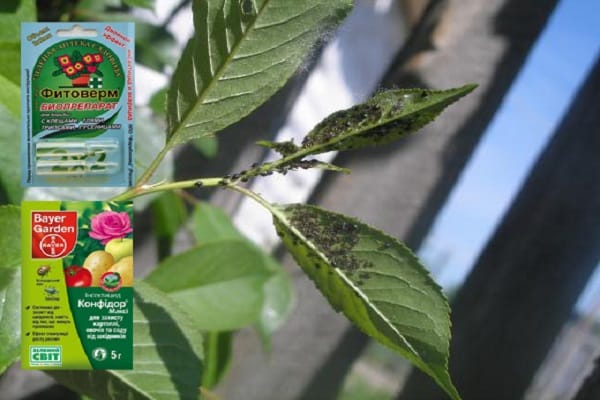
Insect pest control methods
There are many ways to combat aphids:
- at the initial stages of the appearance of aphids, a mechanical method of dealing with the use of techniques and devices that interfere with the spread of individuals throughout the garden is suitable: manual collection and disposal of branches and leaves, glue and grass traps;
- the technological method of struggle includes the use of modern technology, tools, techniques: aphid failure with a strong jet of water, the use of sprayers, pumps, fumigation with various compounds;
- a chemical pest control method includes treating trees with various fungicides;
- the biological method is the use of biological products and natural enemies of pests;
- folk methods - the use of skills and improvised means, bactericidal and phytoncidal properties of surrounding plants, knowledge accumulated by gardeners for a long time in the fight against insects.
Competent and timely application of any method or set of measures helps to get rid of the aphid infestation. How to save the garden from pests, which way to choose in order to ensure a healthy plant content and get a high yield - it is up to gardeners to decide.

Mechanical
At the initial stages of insemination by larvae and female aphids, young shoots and leaves can be torn off and disposed of.
In the fight against ants (defenders and carriers of aphids), glue garden traps are used to prevent ants from moving along the trunk of cherry trees. Traps are sold in specialized stores. Cultivation of the soil of garden plots, timely removal of weeds help in the fight against pests and plant diseases.
Herbal traps are prepared independently from fresh grass, which is laid out in a basin with a high side and sprinkled with sweet water.
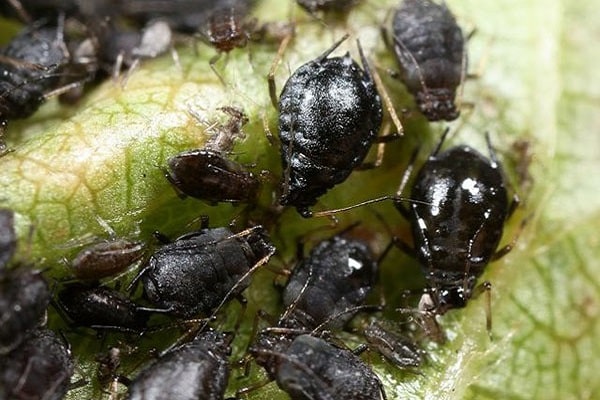
Biological way
Ladybugs, which feed on adults and aphid larvae, will help to destroy aphids without the use of toxic drugs. Plants will help attract ladybirds to garden plots: coriander, lovage, dill, parsley, fennel, calendula.
Living biomaterial in the form of ladybirds or their larvae can be purchased at pet stores and planted on trees infected with aphids.
Biological agent Fitoverm has a nerve effect on adults through the digestive tract; the drug does not work on the larvae. Processing is carried out according to the instructions, repeatedly, at twilight, preferably in wet weather (after rains). The drug completely decomposes in the light within 2-3 days, it is not toxic to the environment.

The drug Akarin is identical in its properties and method of administration to the previous drug.
Iskra Bio drug: 10 ml bottle, the solution is prepared according to the instructions. The drug is highly effective, in case of heat + 25 From and above, the efficiency increases. Not addictive to pests. Plants are processed during flowering, setting and ripening of cherries.
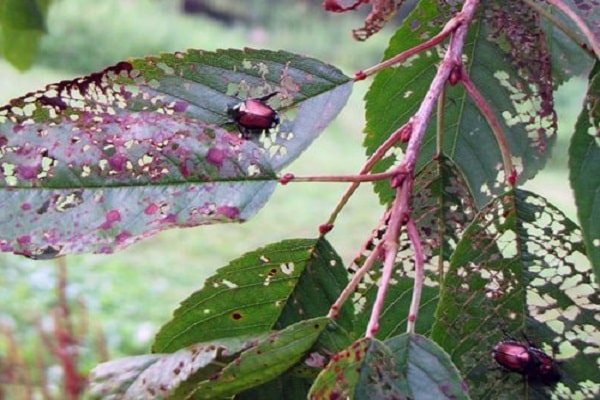
Technological
Technological processing methods include the use of simple folk technologies and modern advances in technological processes and equipment.
Simple technologies include an elementary way of washing off aphids and their larvae using a powerful jet of water. The land in the area of crown flushing is treated with chemicals or folk remedies, after which it is necessary to remove and dispose of all vegetation under the crown of cherry cherries.
Under the trees in a bucket, pieces of rubber tires are kindled, which emit acrid smoke - aphids and larvae die from it.
There is modern equipment that forms fine mixtures of cold or hot steam with chemical or biological agents.

There are specialized organizations that carry out disinfection activities, both for individuals and in large nurseries, using new technologies and equipment. They take into account all factors and processing conditions, skillfully use chemical and biological preparations.
Chemical method
Chemicals are used when time is lost and aphids have seeded most of the cherry branches.Chemicals are chosen depending on the timing of the treatment, goals, areas of infection, and expected results.
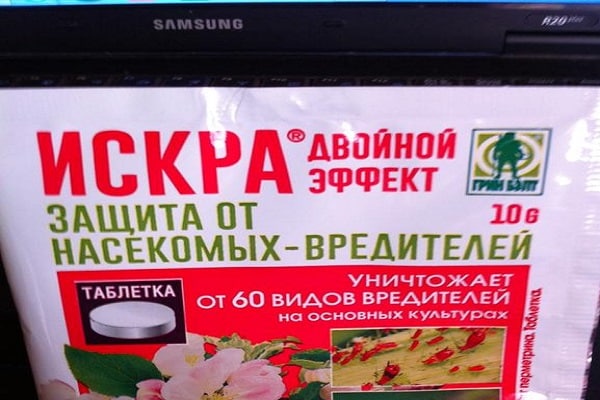
- Spark preparation: dilute 1 tablet in 10 liters of water and sprinkle the cherry tree during the period of swelling of the buds or during the opening of the leaves.
- Kinmix drug: 2.5 milliliters of the drug are diluted in 10 liters, 4 liters are consumed on a large tree. With this solution, aphids can be poisoned after flowering.
- The Iskra Zolotaya preparation: 40 grams are diluted in 10 liters of water, the solution consumption is 2-5 liters per tree, the insects die within 2 days. The drug is of prolonged action, period - 25 days, protects the shoots that appear after treatment.
- Iskra-M for caterpillars (also effective against aphids): 5 milliliters is diluted in 5 liters of water, consumption per tree is from 2 to 5 liters, depending on the age of the tree and the number of seeds. Has a fast action.
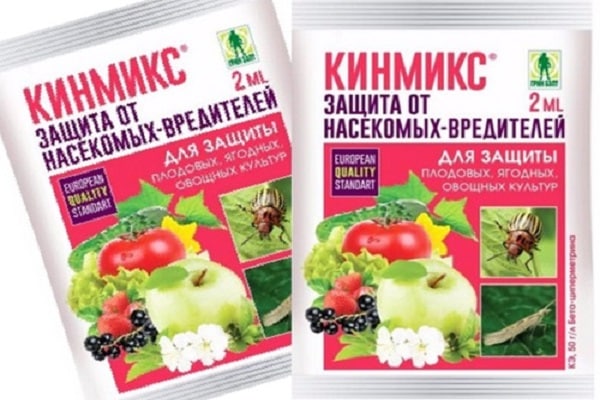
Folk remedies in the fight against insects
Modern chemical and biological preparations for treating plants from diseases and pests appeared in the middle of the 20th century, with the development of chemical industries and biotechnology. There are many folk remedies that people have used to protect their gardens in the past. All fungicides, pesticides, biological products contain substances of natural origin, obtained or derived by artificial methods.
Therefore, using folk remedies, it is necessary to observe the concentration and dosage of the preparation of infusions, decoctions, solutions, since they can not only kill harmful insects, but also destroy trees.
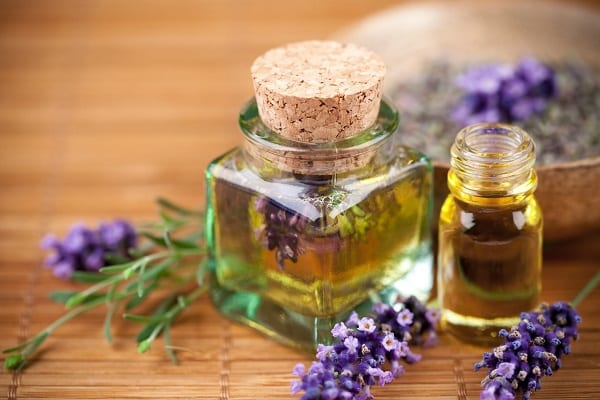
Ash
The wood ash contains salts of alkaline earth metals; ash water extract is called lye, due to the content of alkali metal salts. Soapy lye to the touch, has bactericidal properties. A solution of lye in water is enriched with additional substances with fungicidal properties.
Preparation of an ash solution with potassium permanganate (potassium permanganate):
- 2 glasses of wood ash are poured into 10 liters of hot water, mixed well to dissolve the lye in water;
- potassium permanganate is added to alkaline water - ½ a coffee spoon, mix well;
- the solution should become a deep pink color; a liquid with a high content of potassium permanganate (dark beetroot) will burn the plant - such a solution must be diluted with water;
- strain the solution and spray the trees.
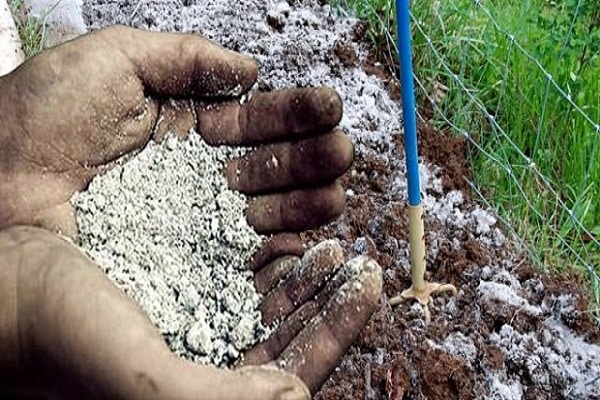
Preparing an ash solution with soap and vinegar:
- 300 grams of ash are poured into a bucket, 3 liters of boiling water are poured, mixed and insisted for a day;
- add 2 tablespoons of planed tar soap, mix, dissolve the soap;
- add 7 liters of water, mix, filter, add 2 tablespoons of 9% table vinegar (to neutralize the excess alkalinity of the solution so as not to burn the tree branches).
Cherry trees are sprayed with this solution before flowering and 2 weeks after flowering.
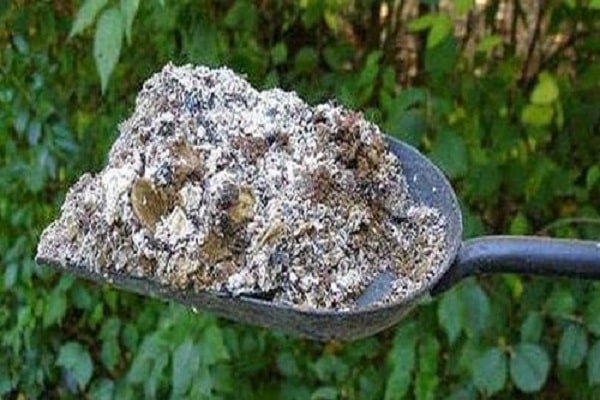
Garlic
Garlic belongs to phytoncidones - its arrows emit phytoncides into the air, which have bactericidal properties, which frighten off pests. Gardeners plant areas around apple trees, cherries, plums with perennial garlic, which protects trees from insects, including aphids. Garlic practically removes all pests from the area where it grows.
Garlic infusion is prepared as follows:
- in 10 liters of warm, not hot water squeeze out, using a manual garlic press (garlic press), 50 grams of garlic, mix;
- insist day;
- filtered through a canvas rag, wring out;
- the solution is sprayed over the cherries.
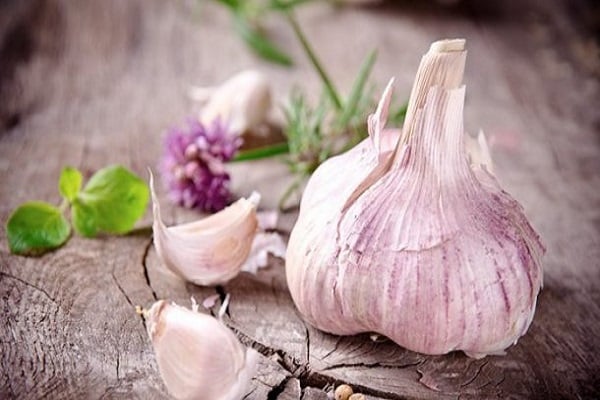
Dandelion
May and June are the months of abundant flowering of the dandelion, with its help you can fight aphids. Fresh dandelion leaves or roots are good for this.
Dig up 300 grams of roots or pluck 400 grams of fresh leaves, chop the roots, cut the leaves and brew them warm (no more than 40 C) water, insist 3 hours, filter and process the diseased tree.
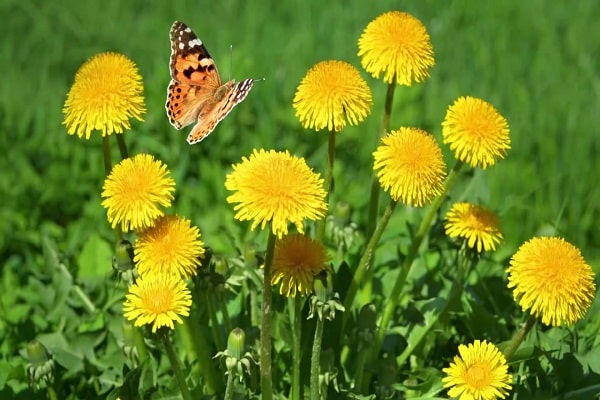
Celandine
Celandine is a plant with which you can successfully get rid of harmful insects. Celandine is harvested in May, during flowering (torn entirely at the root) - at this time, celandine has more bactericidal properties. It must be remembered that the whole plant is poisonous.
The herb is dried in the shade in a well-ventilated area. The dried grass is ground into powder and pollinated by branches and cherry shoots infected with aphids. Dry celandine powder sticks to sticky leaves, celandine toxins penetrate into the leaf juice, aphids suck out the poisoned juice and die.
An infusion can be made from celandine: 3 kilograms of fresh plants are crushed and brewed with boiling water (10 liters), insisted for 2 days or boiled for half an hour. You can brew dry celandine, while taking 800 grams of previously prepared celandine for the same volume of water.
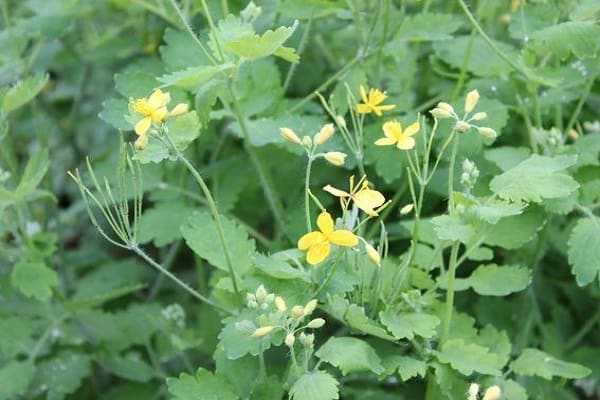
Soap solution
A solution of 72% laundry soap acts as a contact fungicide (the high alkali content in the soap solution forms a protective alkaline film with a powerful bactericidal effect). If you prepare a soapy solution in a decoction of yarrow, you get a drug of combined action: contact and systemic, due to the bactericidal properties of yarrow.
Preparation of a soap solution with a yarrow broth:
- 800 grams of dried grass is crushed, poured with 10 liters of boiling water, insisted for 2 days (or boiled for half an hour);
- the broth or infusion is filtered through cheesecloth;
- grate ½ piece of laundry soap, pour it into a bucket with infusion, stir until the soap is completely dissolved;
- the prepared solution is sprayed with branches seeded with aphids.
Preparing a soap solution in water:
- grate a piece of laundry or tar soap;
- dissolve the soap shavings in 10 liters of warm water, mix well, let the soap dissolve;
- spray the infected trees with the resulting solution.
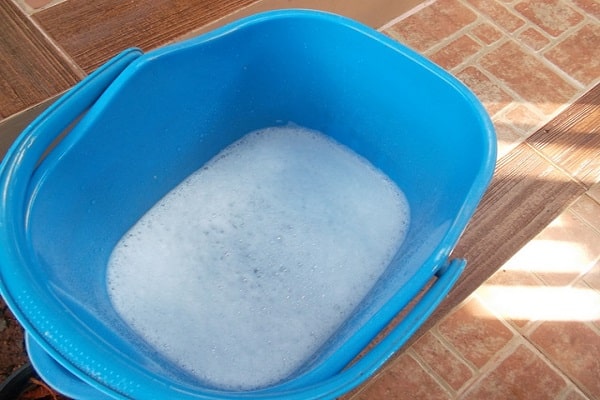
How to handle correctly
When processing cherry trees it is necessary not only to correctly use preparations for disinfection, but also to remember the rules for processing trees and precautions against toxic effects on the human body:
- when carrying out treatments with chemicals, it is necessary to use a protective suit, rubber gloves, respirators, glasses;
- trees are treated in the early or evening hours, taking into account the humidity, in accordance with the instructions in the instructions, in order to preserve the insecticidal properties of the solutions;
- processing is carried out from the top of the crown of trees downward, the trunks of cherry trees, a piece of land around the trunk are processed;
- equipment, protective suit and accessories must be washed with detergents;
- the drugs are used depending on the state in which the tree is (flowering, ripening of berries, after harvesting).
During flowering
During flowering, trees should not be treated with toxic drugs, as this will harm bees and other pollinators. The last time the treatment with chemicals is done 2 months before the harvest ripens. During flowering, it can be treated with Iskra Bio.
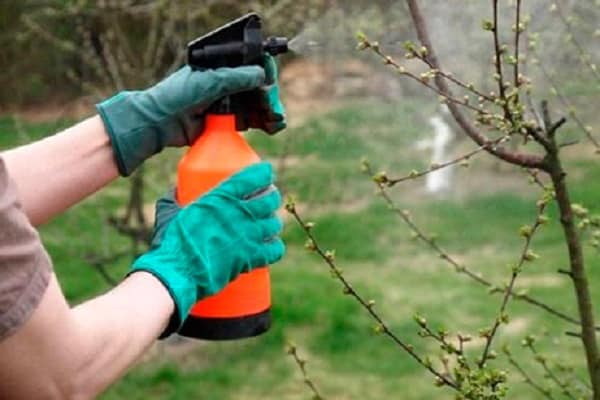
During fruiting
If necessary, during fruiting, trees are treated with biological preparations, since when using chemicals, toxic substances penetrate the pulp of the berry and have a toxic effect on the human body.
Biological products are used: Fitoverm, Akarin, Iskra Bio - they decompose in the light within 2-3 days.
After harvest
After harvesting, you can use various chemicals: with a quick effect, prolonged action, strong toxic action.
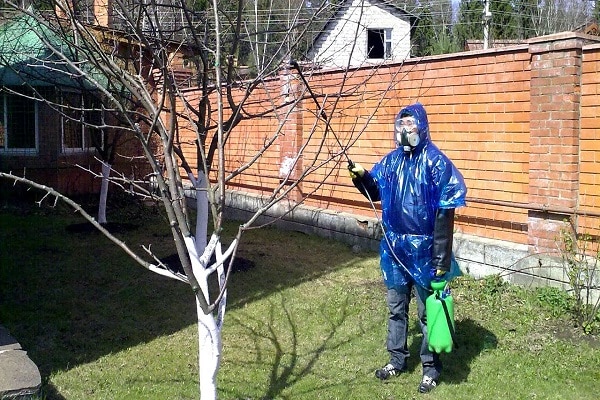
Seasonal prevention measures
Preventive measures to ensure a healthy garden area and, in particular, cherry trees must be carried out taking into account the seasons, the condition of the trees, the presence, absence of diseases or pests in the past season.
Choosing a location for planting cherries in sunny, ventilated areas is essential for the growth of healthy trees without pests. Cherries are planted away from viburnum, hawthorn, as they attract aphids with their specific smells.
The maintenance of the garden, cleared of weeds, the correct conduct of agrotechnical work, preventive measures against pests create all the conditions for growing healthy trees.
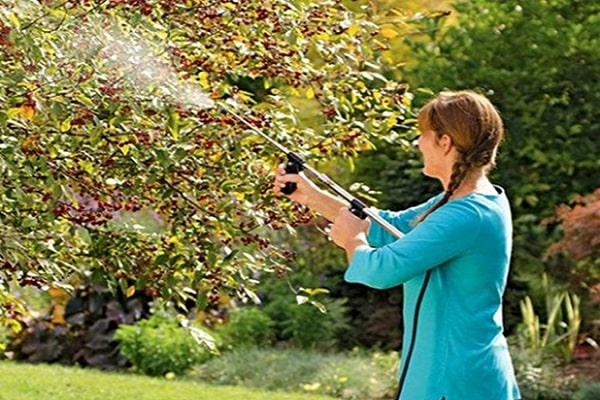
Spring
Spring preventive measures include: agrotechnical actions in the form of digging land plots under the crown of trees, whitewashing of trunks with preliminary cleaning of the bark, and competent application of mineral fertilizers.
Planting around the trunks of garlic, coriander repels harmful insects; the tops of the coriander are trimmed daily to increase the release of phytoncides. Calendula and saffron attract ladybirds.
Summer
Summer preventive measures: regular weeding, mulching of the land with needles, since it contains phytoncides, preventive treatment of trees with prolonged-release chemicals, in the case of plants seeded with aphids in neighboring areas.
Fighting anthills in the garden area using drugs: Ant, Thunder and folk remedies, since ants are carriers of aphids.
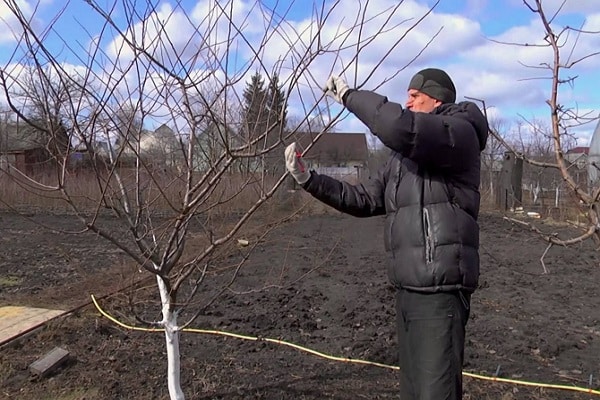
Fall
Autumn preventive measures: cleaning and whitewashing of trunks, cleaning around the trunk land from fallen leaves, dry grass, digging the land. Crown formation, pruning dry and thickened branches.
Competent and regular implementation of preventive measures creates conditions for the cultivation of healthy plants in the garden without diseases, pests and for obtaining consistently high yields.
